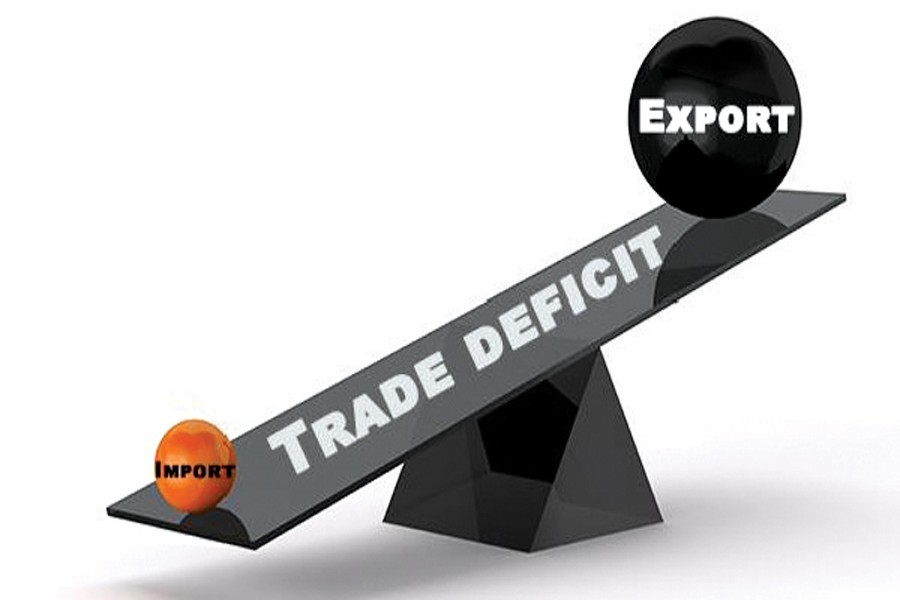The Bangladesh Bank (BB) in a recent report said that the country's trade deficit between July and January of the current fiscal year (FY 22) shot up to US$18.69 billion. Evidently, it is indicative of high growth of import in the post-pandemic dispensation as business has started in full swing. Side by side with that, other issues like price hike of commodities and energy in the international market has also factored into the overall import costs. Add to that the impact of the ongoing Ukraine war on the energy and grain market, turning it more volatile. At the same time, one needs also to consider the fact that the inflow of foreign remittance during these seven months of FY22 has declined by 20 per cent vis-à-vis the amount in the same period of FY21. Needless to say, all these issues together have contributed to the inflating import bills.
Meanwhile, foreign currency earning from exports has also risen to US$27.98 billion in the first seven months of FY22.That amounts to close to 30 per cent increase in export earnings over what it was during the same period in the previous fiscal at US$21.65 billion. Even so, it could not match the rise in the cost of imports. For the total cost of import during the period in question was US$46.67 billion, whereas during that time in the previous fiscal the amount was US$31.92 billion-a whopping 46 per cent-plus rise in import cost. Understandably, the trade deficit is going to put pressure on the current account balance for settling increased import bills in foreign currency. And to meet higher import bills, the demand for foreign currency would also increase leading to depreciation of domestic currency, taka, against dollar. It is learnt that to avoid the situation, the BB has already intervened to stabilise the foreign exchange market and sold hard currency worth US$3.38 billion from the country's foreign exchange reserve to the commercial banks. As expected, this is to enable the banks to meet their payment obligations related to imports for the current fiscal.
In this context, some experts have suggested that to offset the pressure on the foreign currency market as well as to meet rising import costs, the government may also go for short-term borrowing of dollars from international development partners. In this situation, the government would be well-advised to make prudent use of such measures as necessary to meet the emergencies. However, these are but temporary developments affecting the import costs and as such need addressing through the kind of short-term measures the government has already started taking. But as the economy is growing with a faster pace than before, the volume of import will necessarily be on a rising curve and so will be the costs attendant on it.
Obviously, the best answer is to earn more foreign currency from exports to reduce the current-account deficit, which during the July-January period has grown to a gaping US$10.6 billion, the highest so far. Also, efforts should be there to send trained, quality manpower abroad to increase the volume of inward foreign remittance. Overall, a long-term solution to the issue of trade gap and current account deficit should be sought through a renewed emphasis on increasing the country's export as well as inward remittance.


